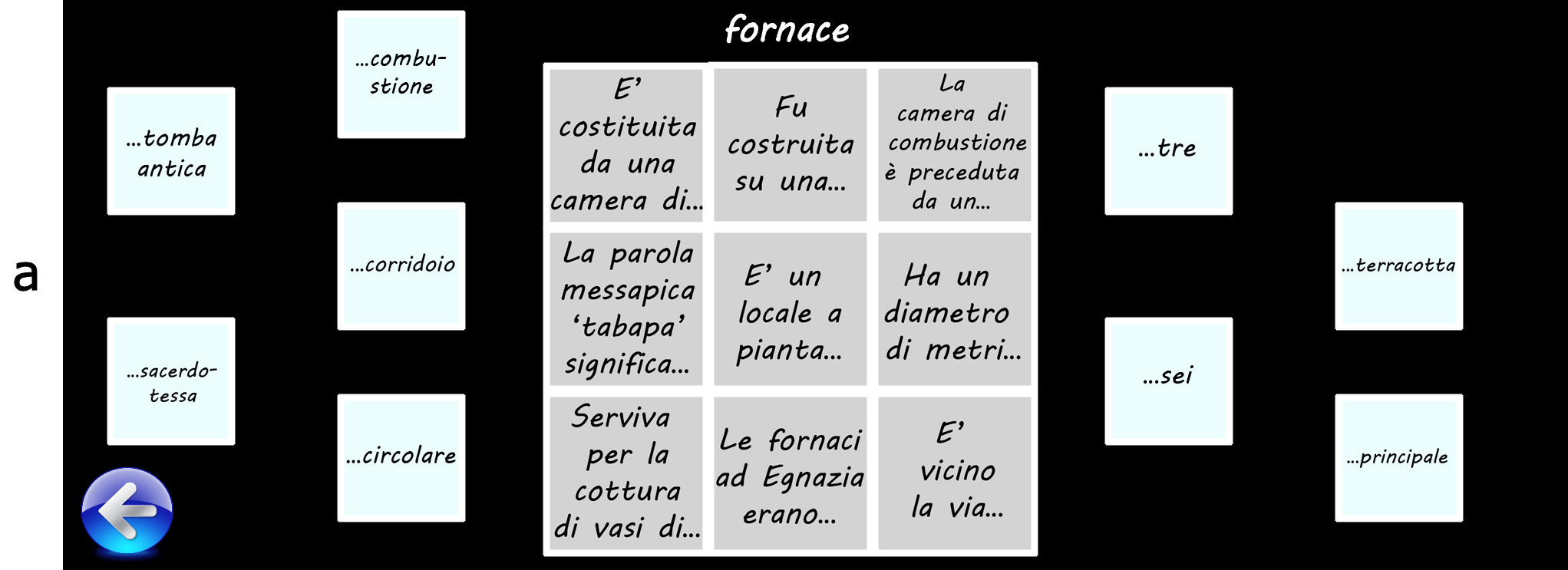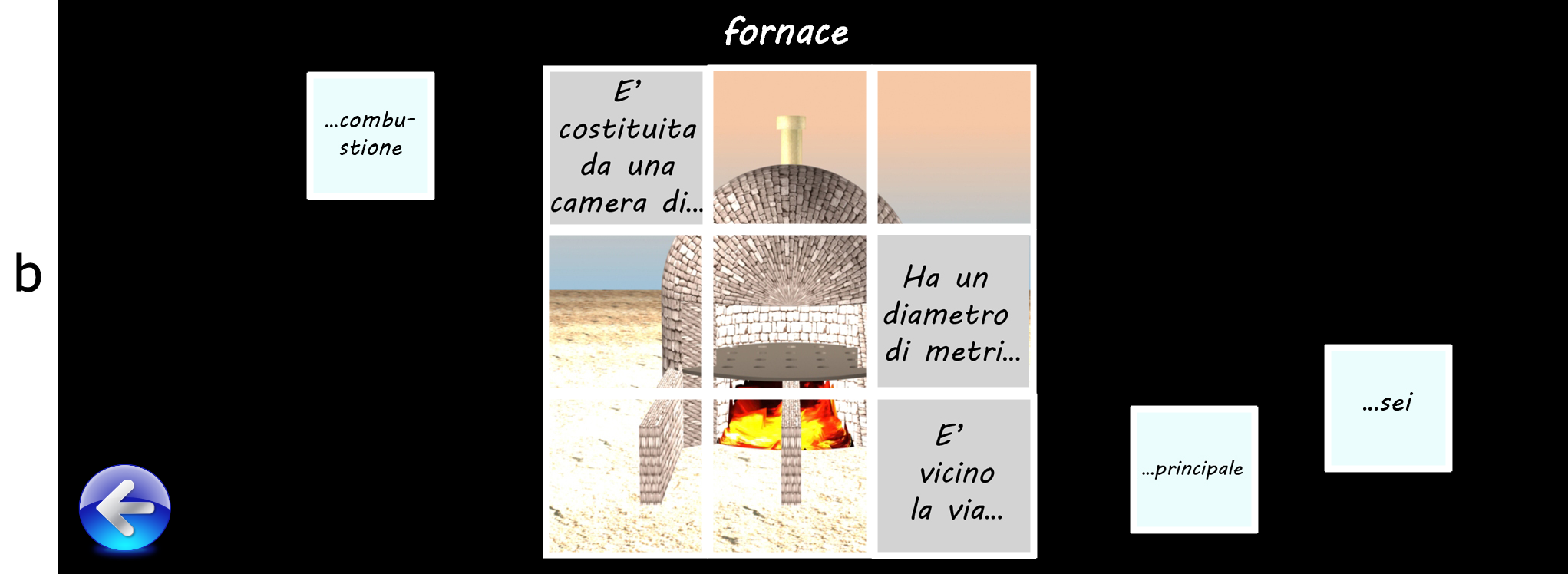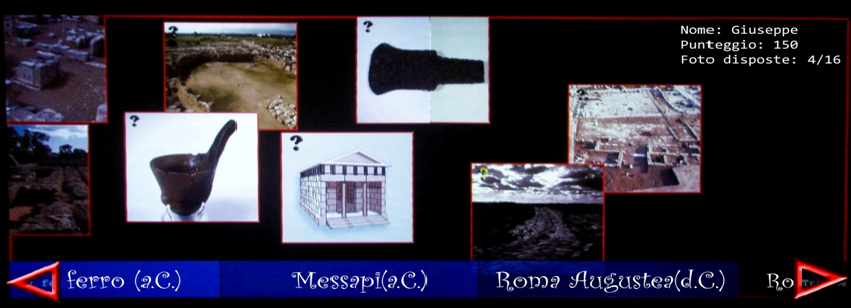

 |
 |
History-Puzzle |
 |
Time-Voyager |
 |
Time-Voyager: Challenge between two players |
The applications described in this page are designed for large multitouch screens.
The hardware system provided by MultiTouch Ltd relies on the so-called “diffused illumination” technology, like what is used in the Perceptive Pixel display; it requires:
The screen consists of a safety glass behind which a rear-projection canvas is attached.
The present system screen size is 2 x 1.2 meters but it is possible to use screens of up to 16 meters.
This technology is less costly than a format consisting of several combined LCD panels and, above all, less delicate. In fact, the screen is made of a normal safety window like the ones used for shop windows, so in case of damage, by vandalism for instance, it is only necessary to replace the glass and not costly LCD panels. However, the screen needs to be completely disassembled for transport and, each time this happens, the projection system and touch sensors will then have to be re-calibrated.
Developing software applications for multitouch screens is still not easy.
Multitouch hardware manufacturers provide Software Development Kits (SDKs), but customers need to have specific skills to be able to use them properly to program their own software applications. For example, MultiTouch Ltd provides an SDK, called “Cornerstone”, that requires C++ and OpenGL programming. The games here presented have been developed in Java, thanks to the open source MT4J (Multitouch for Java) development platform. The TUIO protocol has been adopted to allow communication between the touch-capture system and the software application.